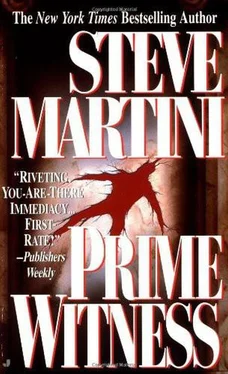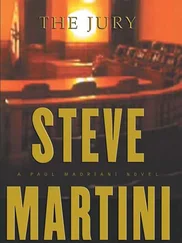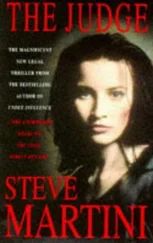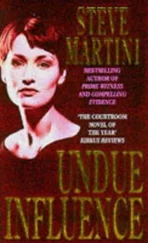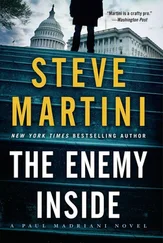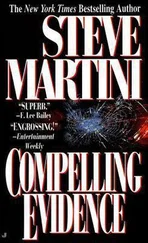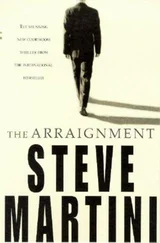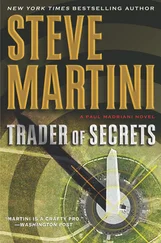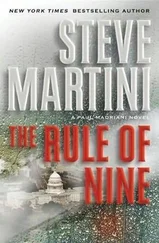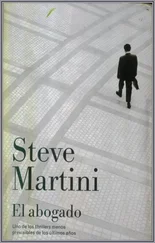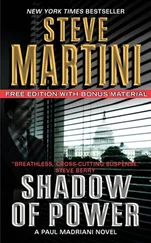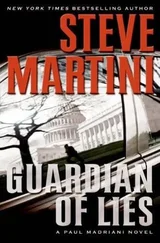Steve Martini - Prime Witness
Здесь есть возможность читать онлайн «Steve Martini - Prime Witness» весь текст электронной книги совершенно бесплатно (целиком полную версию без сокращений). В некоторых случаях можно слушать аудио, скачать через торрент в формате fb2 и присутствует краткое содержание. Год выпуска: 1992, ISBN: 1992, Издательство: Jove, Жанр: Триллер, на английском языке. Описание произведения, (предисловие) а так же отзывы посетителей доступны на портале библиотеки ЛибКат.
- Название:Prime Witness
- Автор:
- Издательство:Jove
- Жанр:
- Год:1992
- ISBN:9780515112641
- Рейтинг книги:5 / 5. Голосов: 1
-
Избранное:Добавить в избранное
- Отзывы:
-
Ваша оценка:
- 100
- 1
- 2
- 3
- 4
- 5
Prime Witness: краткое содержание, описание и аннотация
Предлагаем к чтению аннотацию, описание, краткое содержание или предисловие (зависит от того, что написал сам автор книги «Prime Witness»). Если вы не нашли необходимую информацию о книге — напишите в комментариях, мы постараемся отыскать её.
Prime Witness — читать онлайн бесплатно полную книгу (весь текст) целиком
Ниже представлен текст книги, разбитый по страницам. Система сохранения места последней прочитанной страницы, позволяет с удобством читать онлайн бесплатно книгу «Prime Witness», без необходимости каждый раз заново искать на чём Вы остановились. Поставьте закладку, и сможете в любой момент перейти на страницу, на которой закончили чтение.
Интервал:
Закладка:
Claude studies them, turns them over to examine the evidence stamp on the back. “They’re taken by our department,” he says.
“The Davenport County Sheriff’s Department?”
“Yes.”
“And what do they depict? What are these pictures of?”
“They are various angle shots of the victims, Karen and Abbott Scofield and the murder scene.”
“Did you direct the taking of these photographs?”
“I did.”
“You have the other photographs there, next to you.” Adrian’s pointing to the shots I have already put into evidence, what is left of my legion of photographs.
He reaches in and grabs one of these. “This is a good one,” he says. He holds it up from a distance to show the judge and me. It’s a closeup of a hand, a fist clenched in the agonies of death, flesh the color of blued steel. This is blood trapped, coagulated at the extremity by the confines of the cord, tightly coiled around the wrist.
“What is this photograph?”
Claude looks at it, reads the label on the back side. “That’s the right hand of Jonathan Snider.”
“Good. Now look at this photograph.”
Claude takes the second shot from Chambers, again reading the label on the back. He looks at the lawyer.
“Can you identify that photograph, lieutenant?”
“It’s the right hand of the victim Abbott Scofield.”
“Looking at the two photographs side-by-side, can you tell me,” says Adrian, “is there any difference in the way the rope is tied around the wrist of each of the victims?”
“No, a common loop,” says Claude.
“And the knot used to tie the cord, any difference between the two knots?”
“Not that I’m aware of.”
“Well, you’re the investigating officer, if there was a difference in the knots you’d be aware of it, wouldn’t you?”
“I suppose.”
“Well, is there a difference?”
“No, it’s a common knot. If I were to tie ten, I’d probably tie nine like that myself.”
“But there’s no difference?” says Adrian, coming back to the point at hand.
“No. There’s no difference.”
“Besides the knots and the way the victims were tied off on the ground, was there any difference in the position of the victims on the ground as between the college students and the Scofield victims?”
Claude thinks for a moment. “No appreciable difference.”
“Was there any difference?”
“No.” A grudging admission.
“The metal stake that was used to kill each of the six victims, the students and the Scofields, was there any difference in the positioning of this stake in the bodies, generally?”
“Objection. The witness is not a medical expert.” I’m up trying to give Claude a little close cover.
“I’m not asking for medical expertise,” says Chambers. He turns on me. “I assume the witness knows the difference between the head on the human anatomy, and the abdomen. Were all of the stakes driven into the abdomen in generally the same location, at roughly the same angle?”
“The witness may answer,” says Ingel.
Chambers smiles at me, tight, intense.
“Yes.” No more from Claude but the bare essentials.
He takes Claude over the falls on the arrangement of clothing, in an arc over the heads of all six victims, and draws a quick concession that there was no marked difference in the arrangement of these items in the Scofield cases from the others.
Chambers moves away from the stand, a few steps.
“Now the facial disfigurement,” he says. “You make a big thing of the facial disfigurement of Karen Scofield.”
“I guess I’m funny that way,” says Claude. “To me, tearing an eye from the head of a human being is a big thing.”
Ingel looks at him sharply, but says nothing.
“You know what I mean,” says Chambers. “Is it really that significant in terms of distinguishing one of these killings from the others?”
“According to some people,” says Claude. “The psychiatrists and psychologists who study such things.”
“Oh, so then you’re relying on the advice of others in this.”
“Yes.”
“So you yourself wouldn’t know whether such facial disfigurement is significant, a basis to distinguish these crimes?”
“Not really.”
Adrian seems happy with this.
“And of course,” he says, “if the facial disfigurement were incidental to the crime, an unintended consequence of other violence, it might take on less significance, perhaps no significance at all?”
“What do you mean?”
“Isn’t it possible that this injury could have happened during the physical altercation prior to death, perhaps when the victim was being initially attacked or restrained, that it was not specifically intended?”
“I don’t know.”
“Well surely, lieutenant, during your years as a law enforcement officer you’ve seen injuries arising from assaults, physical altercations between people? Haven’t you ever seen an injury to the eye occasioned during such an altercation?”
“I suppose,” he says.
“And if a perpetrator of a crime attacked six separate people assaulting each of them, and in one case he just happened to injure an eye, perhaps take an eye out during the altercation, would you attribute any particular significance to that?”
“I don’t know.”
“If it was unintended?” he says. “I mean if you knew it was unintended, you wouldn’t go running off and assume that because of the eye injury, that this crime necessarily was committed by a different perpetrator?”
“Not if I knew it was an unintended injury.”
“Then it would really be insignificant, wouldn’t it?”
“Yes. I suppose.”
“Lieutenant Dusalt, do you know whether the loss of Karen Scofield’s eye was intentional or unintentional?”
Claude looks at me.
“I’m going to object to that,” I say. “Calls for medical expertise.”
“No. No,” says Chambers. “I’m not asking him for any opinion on his part. I want to know whether he has any facts, knows of any information from whatever source, that would inform him as to whether the eye of Karen Scofield was removed intentionally or was the result of some unintentional act.”
“The witness will answer the question,” says Ingel.
“I don’t know.”
“So you do not know whether it was the result of an intentional act?”
“No.”
“So you don’t know whether it’s really significant or not, do you?”
The many faces of pain from Claude on the stand. It is the problem with logic, how it has a way of coming around and biting you in the butt.
“Well?” says Chambers.
“No,” says Claude. “I don’t know for certain whether it’s significant.”
“Well, we can disregard that then, can’t we?”
Nothing but stone silence and deadly looks from Claude.
Like pulling a set of rear molars, Adrian has dragged him this far.
“Let’s talk,” he says, “about the cord used to tie the victims and the metal stakes. Let’s take the cord first,” he says. Adrian looks at me as he says this.
“This is pretty common stuff, isn’t it? I mean you or I could go out and purchase a similar type of cord in a dozen different stores in this town today if we wanted to, couldn’t we?”
“I haven’t counted the stores that sell it.”
“But it’s not just sold in one store?”
“No.”
“This is what we commonly refer to as clothesline cord, isn’t it?”
“I’ve heard it called that.”
“It’s made up of interior filaments and covered with a white plastic sheathing?”
“Yes.”
“And the metal tent stakes, these were common metal stakes, L-shaped, with a point at one end, what I would find if I went into a store that sold hiking gear, back-packing equipment?”
Читать дальшеИнтервал:
Закладка:
Похожие книги на «Prime Witness»
Представляем Вашему вниманию похожие книги на «Prime Witness» списком для выбора. Мы отобрали схожую по названию и смыслу литературу в надежде предоставить читателям больше вариантов отыскать новые, интересные, ещё непрочитанные произведения.
Обсуждение, отзывы о книге «Prime Witness» и просто собственные мнения читателей. Оставьте ваши комментарии, напишите, что Вы думаете о произведении, его смысле или главных героях. Укажите что конкретно понравилось, а что нет, и почему Вы так считаете.
